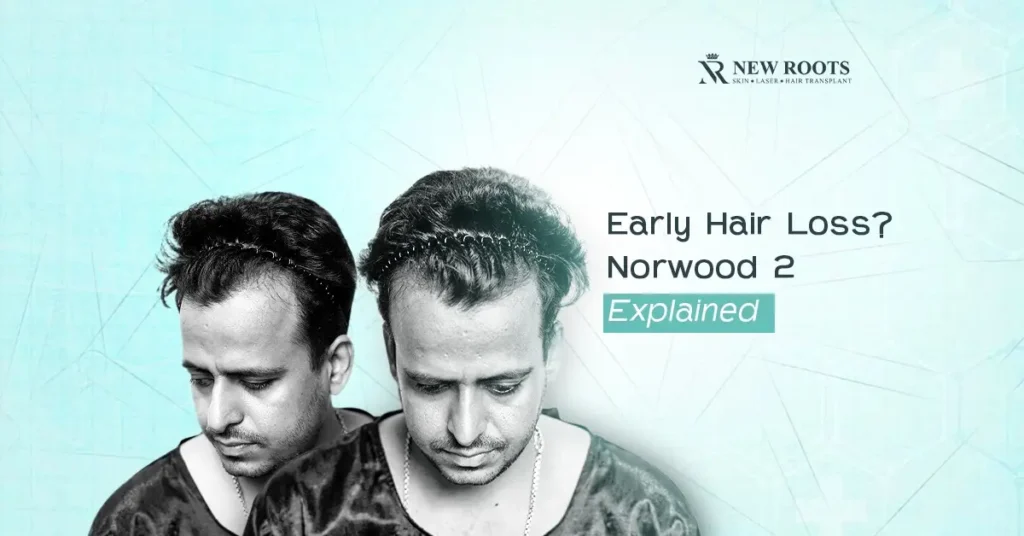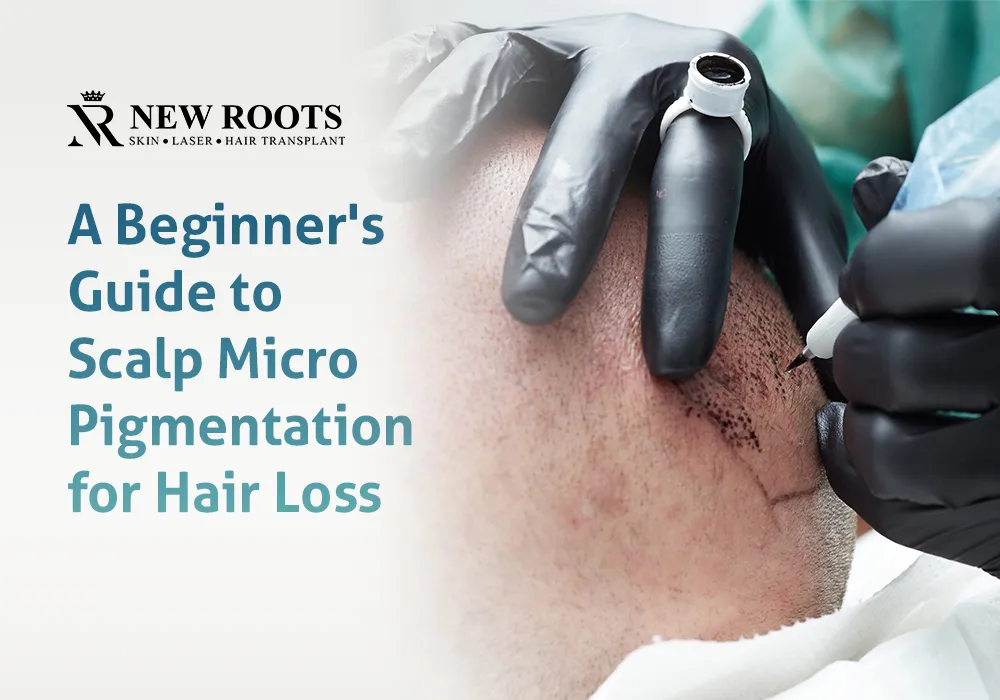Introduction
According to the Norwood Scale, the Norwood 2 hairline is the named and differentiated phase in the development of male pattern baldness.
It depicts a low contraction of the hairline, more so in the temporal areas, showing that one starts experiencing an early stage of hair loss.
It is important for anyone looking to solve a hair loss problem through several approaches to understand this particular stage adequately.
Table of Contents
Understanding the Norwood Scale
It is a rating scale that involves the separation of the patterns of male pattern baldness. It includes: no tan to minimal loss of hair, which is stage 1, and up to stage 7, which is only a thin rim of hair remaining.
Specifically, it assists patients and clinicians in understanding the stages of balding to develop an appropriate management strategy.
Stages of Hair Loss
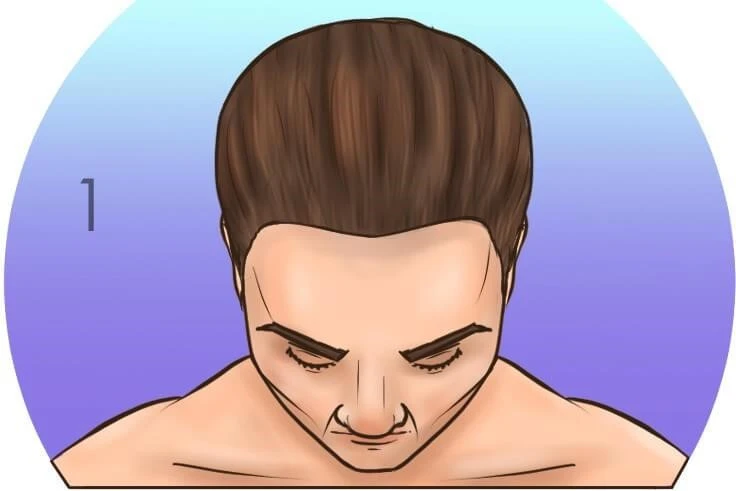
Stage 1
According to the new classification, there has been no clear indication of hair loss in Stage 1 while the hairline was preserved. This stage can control the later development of hair loss.
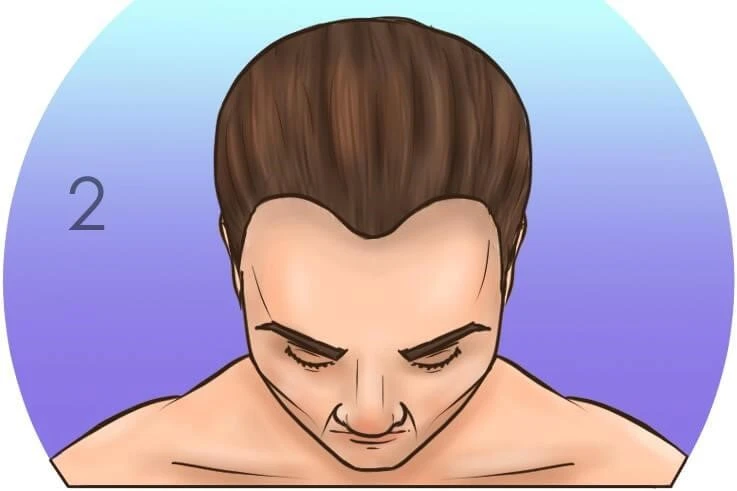
Stage 2: The Norwood 2 Hairline
About Norwood 2 hairline, the first clear sign of recession of the hairline is observable. The only feature about this stage is that the hairline slightly recedes above the temporal region, also called the mature hairline.
There is no generally noticeable hair thinning at this level, and most men will not seek treatment measures that may help them.
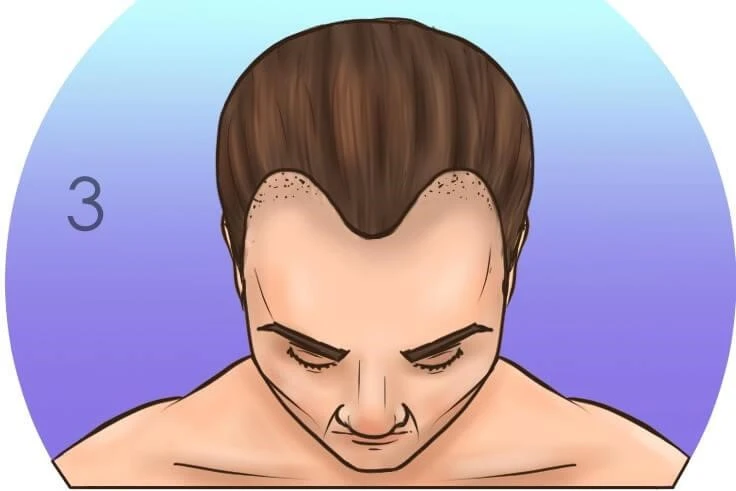
Stage 3
When in Stage 3, those experiencing it will begin to see some noticeable changes in the economic features; the recession deepens. The combination of the hairline at the temples is an M, U, or V shape, and areas of baldness or thinning hair.
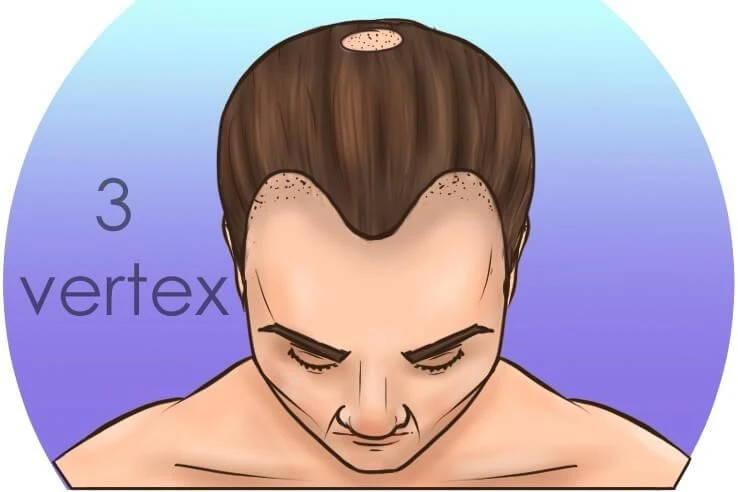
Stage 3 Vertex
Stage 3 Vertex is like stage 3 but has hair loss at the vertex, or top of the head, and the hairline is in stage 2.
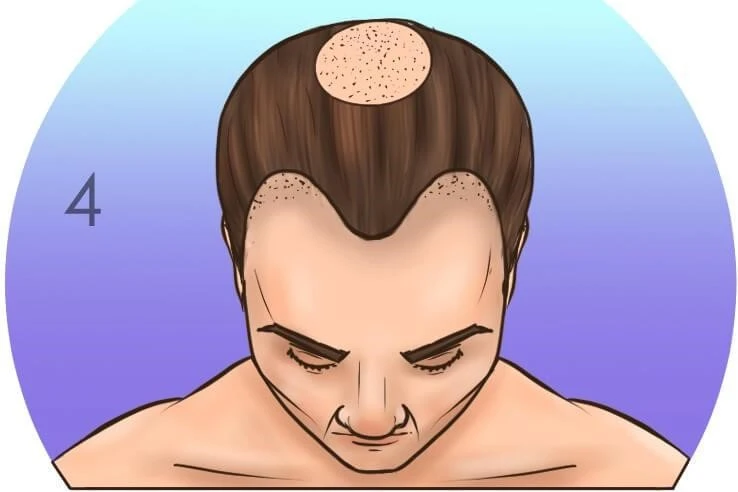
Stage 4
In Stage 4, the recession at the hairline is much worse. Due to the beginning of the recession, the hairline had started thinning significantly.
Area 1 is bald to nearly bald, with only a thin hairline hedge visible in the upper portion of the vertex; area 2 displays baldness over the central vertex with two strips or islands of terminal hair on the sides joined to the vertex area by only a thin hairband.

Stage 5
Stage 5 is also an advancement, further to even and enlarged earlier bald areas, and the narrow band of hair is formed, thus making the hair loss more apparent.
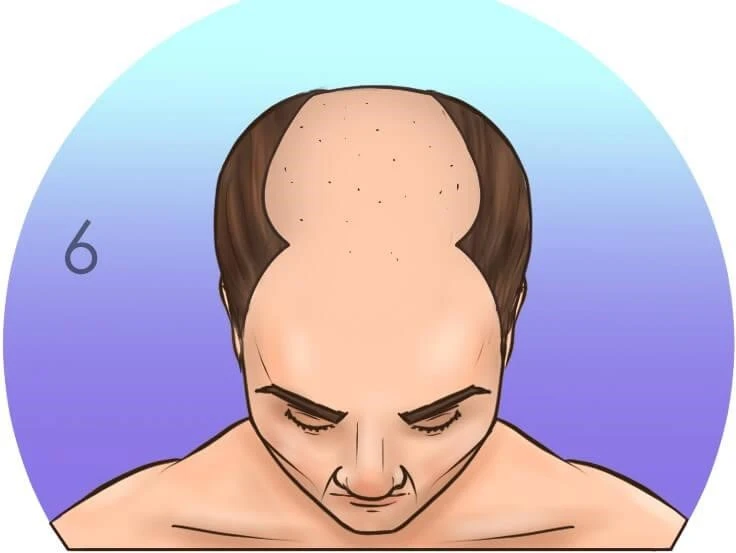
Stage 6
At Stage 6, they are almost joined together, creating a top-of-the-head look or smooth top with a thin main band of hair or no hair left over that entire part.
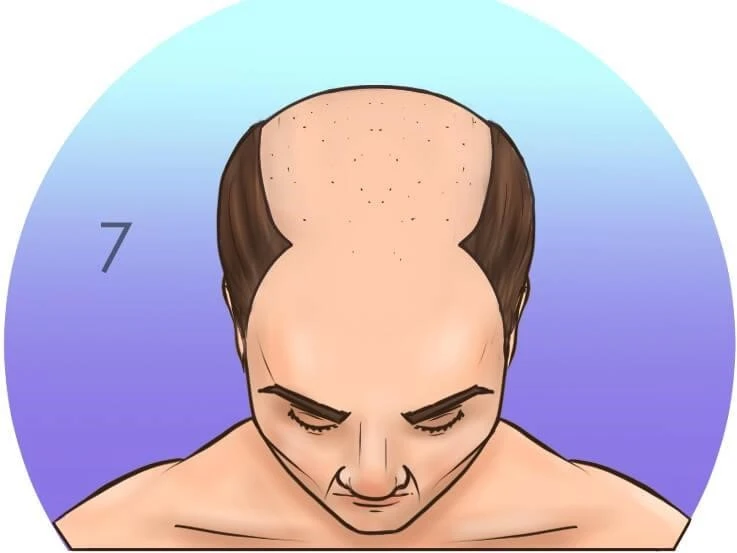
Stage 7
Lastly, Stage 7 represents one of the severe levels of baldness at which only the narrow strips of hair on the upper sides of the head remain. This area usually looks thin and fine.
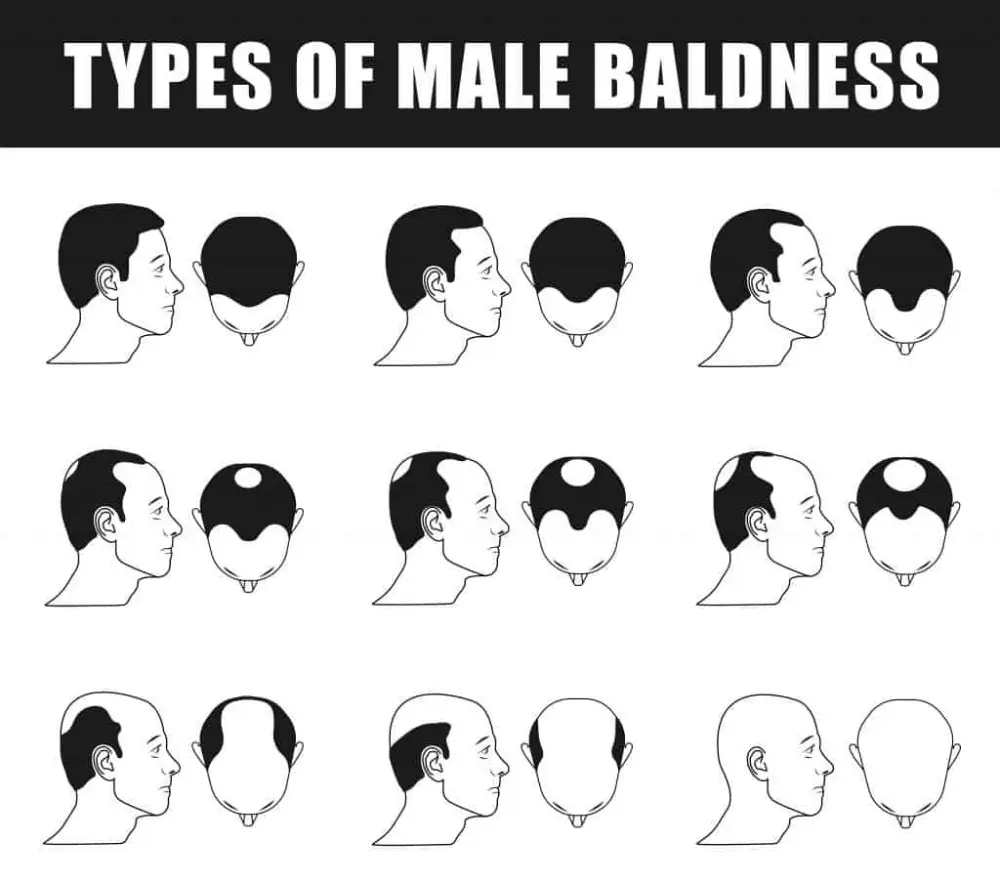
Class A
Class A variation is a different pattern of progression of MPB in which the hairline recedes but does not form an ‘island of hair’ as the Norwood classification describes.
Causes of Hair Loss
So, one can discover the right treatment for hair loss, it’s far crucial to recognize what causes hair loss in the first place.
These causes are normally complex because genetic, hormonal, and environmental causes may combine to bring about this condition.

Genetic Factors
Medical science reveals that androgenetic alopecia—the frequent cause of hair loss in men—is hereditary.
There are sometimes hereditary factors that can be so devastating that one may predict the individual’s chances of developing the condition of experiencing a receding hairline.
Hormonal Factors
Other reasons include depressed hormonal factors, such as androgens, which are hormones such as testosterone.
Dihydrotestosterone is an androgen that is obtained from testosterone; it is well established to cause shrinkage and inactivity of hair follicles, hence developing baldness.
Environmental Factors
Lifestyle factors contribute to it, but these include diet, stress levels, and toxins that affect hair growth in one’s environment.
These factors may not be a cause of male pattern baldness, but they are influential on the tone and texture of the hair and the body in general.
Identification and Diagnosis
Most hair loss management should start with identification and diagnosis measures that are medically used.
Diagnosis Methods
Dermatologists employ several techniques to determine hair loss conditions correctly.
Such may involve ophthalmologic examination and past medical histories to evaluate the extent of hair loss and its presumed pattern.
During the assessment of the stage of baldness, the Norwood Scale is mentioned to classify it properly.
Successful Passing of Physical Examination and Medical History
The physical examination can detect different types of hair loss and can use additional diagnostic techniques to exclude other diseases.
Every patient’s medical history must be taken to enhance the healthcare provider’s knowledge of family history.
Treatment Options
Numerous kinds of treatments are available, and they are all designed to help at a specific stage of hair loss—Norwood 2 hairline treatment.
Over-the-Counter Treatments
These symptoms for Stage 2 can be treated with over-the-counter medication, but not cancer.
Minoxidil: This topical solution is among the best-known and has a reputation for stopping hair loss and possibly even inciting growth on one’s scalp.
Laser Devices: Electrical devices like laser combs can stimulate hair growth, though there is a lot of controversy around their effectiveness.
Prescription Treatments
For severe issues, people may need prescription drugs.
Finasteride: This drug has been approved clinically for the treatment of hair loss and is therefore prescribed to clients after the medical checkup confirms that the client is suffering from male pattern baldness.
Medical Procedures
If all the conservative management approaches are ineffective, then surgical interventions may be proposed.
Hair Transplantation: Hair transplantation is a reconstructive procedure that involves moving hair follicles that are found in the donor areas to the balding fields to give them a natural look.
Scalp Reduction: This method is accompanied by eradicating the completely bald portion of the scalp and is associated with moving hair-rich areas closer together.
Scalp Expansion: Here, the devices are placed on the scalp, and then implantation is done by inducing skin growth.
Scalp Micropigmentation: This method of derma pigment – cosmetic tattooing can also build up an appearance of hair growth by implanting and fixing ideas of the same color on the surface of the head as those of hair follicles.
Prevention Strategies
Some measures can be taken to head off hair loss or, at the very least, minimize it.
Though it must be understood that complete hair loss may not be avoidable, better hair health can prevent hair thinning.
Thus, the prevention plan and the treatment plan are opposite sides of the same coin, providing the person with the best chance of keeping hair loss as a result of hormones or genetics and of coping with it successfully.
Eating the right balanced diet, taking vitamins, exercising, and relaxing may have a huge effect on the state of hair.
Expectations with Norwood 2 Hairline
This knowledge is important in preparing the patient for the hairline stage of Norwood 2 and in decisions on treatment or modification of the lifestyle.
In most cases, clients at this phase have choices that could assist in addressing additional loss of hair proficiently.
It is often possible that many of these men cross into the later stages gradually, and early intervention could increase the likelihood of retaining a better hair mass.
Conclusion
To sum up, Norwood 2 hairline is an important decision between the stages of male pattern baldness.
Acquiring awareness about the cycle of hair loss, its basic reasons, treatment solutions, and the possibility of prevention can provide all those individuals with the kind of knowledge sufficient to make proper decisions about their hair.
Hair loss can be a great disappointment, but early attention and the right treatment will shape the anticipation for better results, depending on the cause.
Q&A ASK
A Norwood 2 hairline is the earliest stage of MPB, where the hairline visibly starts to recede at the temples and does not have clearly defined balding regions in the scalp.
It is at a fairly early stage of the Norwood Scale where the hairline is still intact to a very great extent. Stages 3 and beyond experience even more recession and balding, which results consequently visible bald spots at the crown or front aspect.
A Norwood 2 hairline is largely hereditary and involves DHT hormones, aging, which results in gradual hair loss patterns at different ages.
The treatments for this condition include the use of counter products such as minoxidil, using prescription products such as finasteride, and modifying lifestyles. Hair transplants are usually done when the baldness reaches the progressive stages of hair loss.
indeed, eating a properly-balanced weight loss plan, lowering strain levels, shielding the hair from harsh remedies, and giving an amazing scalp rub down might also all be beneficial for the fitness of hair and retard the development of hair loss.
It has also been found that through early intervention and use of effective treatments, one expects reduced hair loss and even new hair regrowth. There are expected differences in a patient’s response to treatment and in patient compliance.
Some forms of baldness may be irreversible, but treatment at the stage Norwood 2 is often capable of preventing and in some cases even reversing hair loss as a result of thinning, with products such as finasteride and minoxidil.
